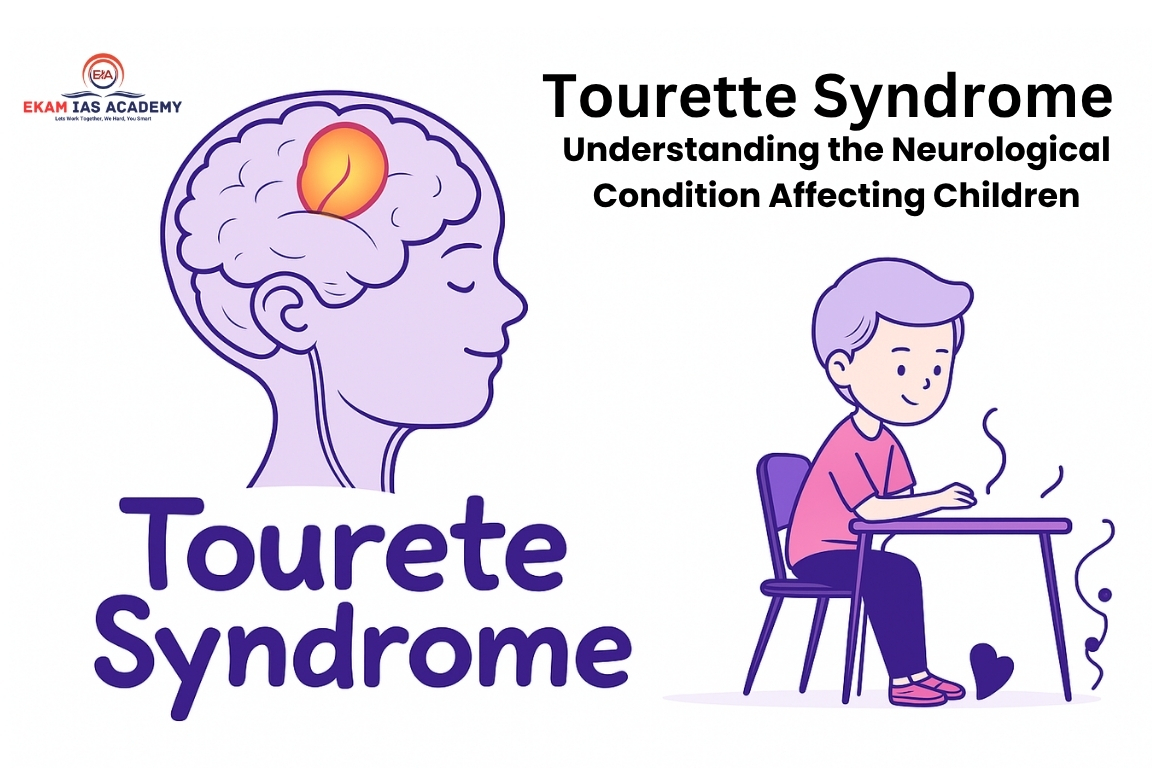Tourette Syndrome has been in focus due to increasing public awareness and discussions about mental health. It affects a small but significant portion of the population, especially children.

About Tourette Syndrome:
- It is a neurological condition that causes sudden, repeated movements or sounds, known as tics, that the person cannot easily control.
- Most cases begin between the ages of 2 and 15, with the average age of onset being around 6 years.
- The condition is more common in boys than in girls.
- It affects about 0.3% to 1% of the world population.
Types of Tics:
- Simple Motor Tics: Involve one muscle group, such as eye blinking, head jerking, or shoulder shrugging.
- Simple Vocal Tics: Include sniffing, throat-clearing, or grunting.
- Complex Motor Tics: Include coordinated movements like hopping, touching objects, or bending.
- Complex Vocal Tics: May involve repeating words (echolalia) or, rarely, inappropriate language (coprolalia).
Triggers and Associations:
- Tics can increase with stress, anxiety, or excitement and often reduce during sleep.
- Often found along with other conditions like ADHD, OCD, depression, anxiety, or autism spectrum disorders.
Treatment and Management:
- There is no permanent cure, but symptoms can be managed.
- Cognitive Behavioural Therapy (CBT) is effective in helping people control or cope with tics.
- Medications may be prescribed in severe cases.
Conclusion
Though not life-threatening, Tourette Syndrome can impact daily life. Early support, therapy, and public awareness can help manage it effectively.





